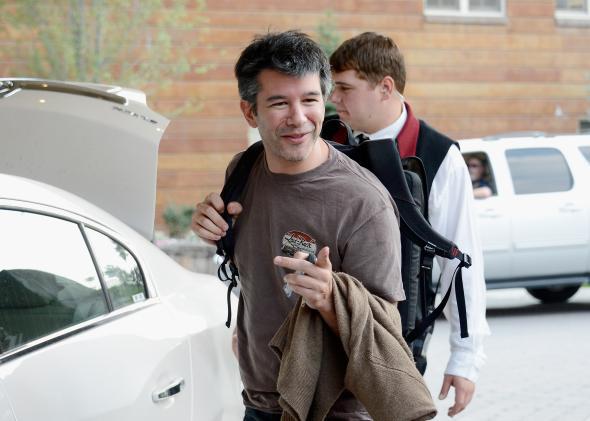So far, Uber has been unfazed in the face of opposition. When local regulators moved to ban it—starting in its origin city, San Francisco—the ride-sharing company turned a deaf ear and pushed ahead anyway. When thousands of taxi drivers choked streets across Europe to protest it, Uber responded by purchasing full-page ads in evening papers and offering steep discounts to customers in European cities. And when governments painted it as operating illegally, Uber retorted that such accusations were a last-ditch effort to protect a stagnant establishment industry.
But now Uber is facing a roadblock it might not want to ignore. On Monday, the Seoul city government said it would seek a ban on Uber and that the ride-sharing service was illegal under South Korean law. “Uber is charging customers while avoiding the regulatory process, which creates unfair competition for taxi drivers,” the Seoul city council said in a statement.
Uber’s response was typically self-assured: “Comments like these show Seoul is in danger of remaining trapped in the past and getting left behind by the global ‘sharing economy’ movement.”
Seoul didn’t stop there, though, nor does it seem interested in getting “left behind.” Come December, the city said, it plans to launch an app that will provide similar functions to Uber for official taxis—geotracking data, driver info, and a ratings system. Seoul isn’t trying to halt Uber. Instead, it’s trying to eliminate the need for it.
Ever since Uber announced its staggering $17 billion valuation in early June, people have been asking the same question: Is Uber actually worth that much? No one can really know, as Will Oremus explained in Slate. And in part, that’s because no one has the answer to an even more fundamental question: How big can Uber get?
In a piece for Wired earlier this month, Marcus Wohlsen outlined Uber’s “brilliant strategy to make itself too big to ban.” Uber’s current business strategy, he argued, is textbook Silicon Valley: Grow first, worry about profits later. Uber CEO Travis Kalanick has taken drastic steps to reduce passenger fares and undercut the taxi industry, even when that means losing money on every ride. It’s the story of Amazon, Wohlsen argues, retold through the transportation sector:
A startup led by a brash, charismatic CEO catches a creaky old industry unaware. It grows quickly, and its popularity explodes as its brand becomes nearly synonymous with the disruptive service it’s offering. Amazon grew—and is still growing— because it’s not afraid to lose money. Low prices and free shipping deals eat away at profitability, but they also keep customers coming back.
Every other time a city has challenged Uber, Kalanick has plowed ahead, because he knows that even if regulators don’t want the service, tons of consumers do. Uber’s potential market, as Matt Yglesias wrote in June, is much bigger than the existing world taxi market. It’s the people who normally wouldn’t take a cab but decide that Uber is more affordable, convenient, or comfortable. It’s the folks who decide to call Uber on vacation instead of renting a car for a few days. And ultimately, it’s the individuals and families who opt to rely on Uber and public transit instead of purchasing a car.
Until now, the biggest challenge Uber has seen to its long-term vision is Lyft, a ride-sharing service similar to UberX that is rolling out across the country. Seoul poses a different kind of threat. Instead of simply resisting Uber’s advances, it might keep Uber out while also giving its people the parts of Uber’s service that they most want. Of course, a government-run app wouldn’t necessarily provide the competition that a private company like Uber could offer. But it’s a start.
And if cities around the world start following Seoul’s lead, Uber could lose what might be its biggest weapon—the perception that regulators are the bad guys, and that resisting them is the only way to give the public the transportation options it deserves.
